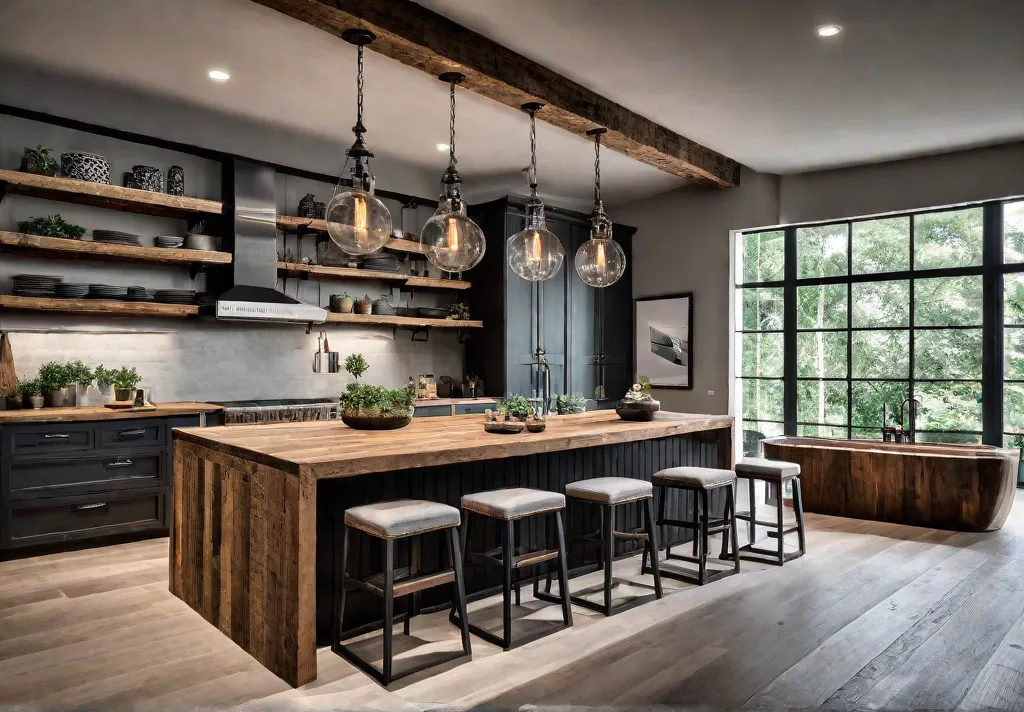Are you dreaming of a cozy, inviting kitchen with that classic farmhouse charm? Adding a farmhouse-style kitchen island is one surefire way to achieve that look. These islands have become increasingly popular in recent years, serving as the heart and soul of the kitchen. As a laidback New Englander with an eye for rustic-meets-modern design, I’m excited to share my tips for creating an authentic farmhouse kitchen island using simple DIY steps.
You see, I’ve always been drawn to the timeless appeal of farmhouse decor—the mix of vintage and contemporary elements, the focus on natural materials, and the overall sense of warmth and comfort. The kitchen island is the perfect canvas to showcase this aesthetic. Whether you’re renovating your entire kitchen or just looking to add a statement piece, building your farmhouse island can be an incredibly rewarding project.

So, grab your toolbox, and let’s dive in! In this article, I’ll guide you through selecting the right materials, designing the layout and shape, and adding those all-important finishing touches to create a truly one-of-a-kind farmhouse kitchen island.
Choosing the Right Materials for a Farmhouse Kitchen Island
The materials you choose for your kitchen island are crucial when nailing that farmhouse look. As a designer passionate about sustainable, locally sourced decor, I always recommend starting with natural, raw materials that capture the essence of the farmhouse aesthetic.
One of my go-to materials is reclaimed wood. There’s just something so charming and authentic about incorporating salvaged wood into your design. Not only does it reduce waste and give new life to old materials, but each piece tells a unique story. Reclaimed wood instantly adds that rustic, lived-in vibe to your island, whether you source it from a local salvage yard or an online marketplace.
Of course, you don’t have to use exclusively reclaimed materials. Mixing new wood with a distressed or weathered finish can do the trick. By sanding, staining, or painting the wood, you can achieve that perfectly imperfect look quintessential to the farmhouse style. And don’t forget about incorporating metal accents, like hardware or light fixtures – the contrast of the cool metal against the warm wood tones can make your island pop.

The key is to embrace these natural materials’ imperfections and unique character. After all, farmhouse design is all about celebrating the beauty in the flaws, not striving for perfection. So, don’t be afraid to let the grain patterns, knots, and other “imperfections” shine through. They’re what give your island that authentic, handcrafted feel.
Designing the Layout and Shape of the Farmhouse Kitchen Island
Once you’ve sorted your materials, it’s time to start thinking about the layout and shape of your farmhouse kitchen island. And let me tell you, the options are endless! From classic rectangular designs to more unique L-shaped or U-shaped configurations, the island’s shape can have a big impact on your kitchen’s functionality and visual appeal.
An L-shaped island can be a great space-saving solution for smaller spaces while still providing ample counter space and storage. On the other hand, a U-shaped peninsula is perfect for larger kitchens, as it offers more opportunities for incorporating seating, appliances, and prep areas.
Whatever shape you choose, it’s important to balance aesthetics and practicality. After all, your island needs to be both beautiful and highly functional. That’s why many farmhouse-style islands feature a butcher block or wood top – it’s a versatile work surface that complements the rustic vibe and serves as a hub for cooking, baking, and meal prep.
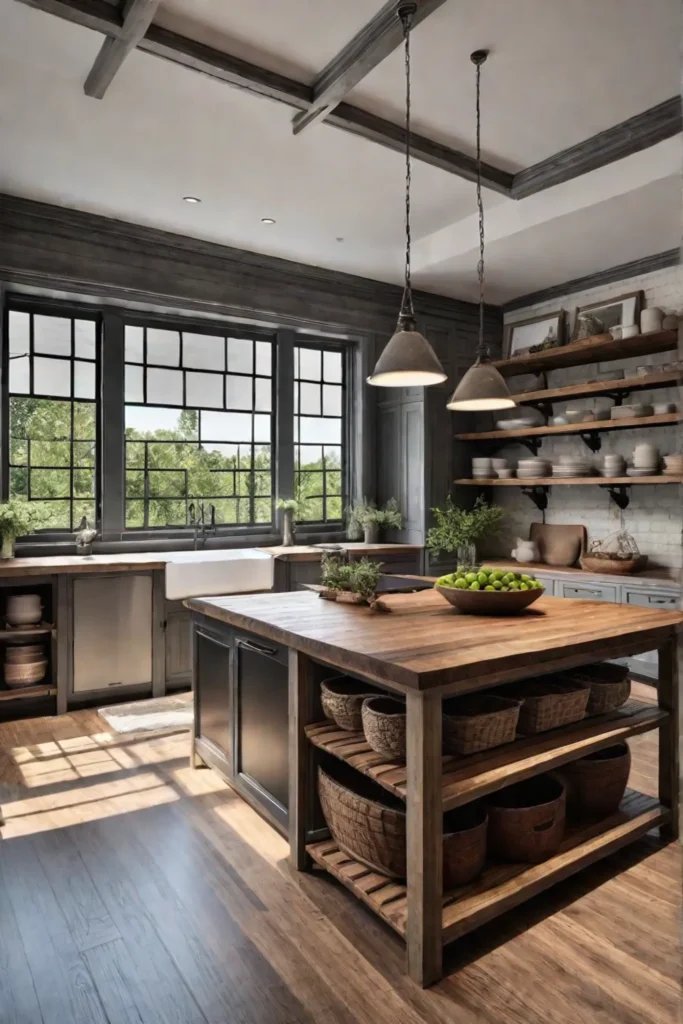
And don’t forget about incorporating storage and seating into your island design! Open shelves, drawers, and a built-in pantry can help keep your kitchen organized and clutter-free. Adding a few cozy stools or chairs around the island creates an inviting gathering spot for family and friends.
When it comes to determining the optimal size and shape for your island, I always recommend carefully measuring your kitchen space and considering how you’ll use the island daily. It’s all about finding that perfect balance between form and function—and trust me, it’s so worth the effort to get it just right.
DIY Steps for Building a Farmhouse Kitchen Island
For all you DIY enthusiasts out there, creating a farmhouse kitchen island from scratch can be an incredibly rewarding project. And the best part? It doesn’t require a ton of specialized woodworking skills. With some basic tools, a little elbow grease, and a lot of farmhouse charm, you can transform your kitchen into the cozy, inviting space of your dreams.
The first step is to plan and measure your space meticulously. Knowing the exact dimensions of your kitchen will help you determine the ideal size and shape for your island. Once you’ve locked down those measurements, it’s time to start building the base. Using basic carpentry techniques, you can construct a sturdy, freestanding frame out of wood – think pine, oak, or maple for that rustic vibe.
Next up, it’s time to tackle the countertop. This is where you can let your creativity shine! Opt for a classic butcher block surface, or get adventurous with a concrete or reclaimed wood top. Be sure to sand, stain, or distress the wood to achieve that perfectly imperfect farmhouse look.
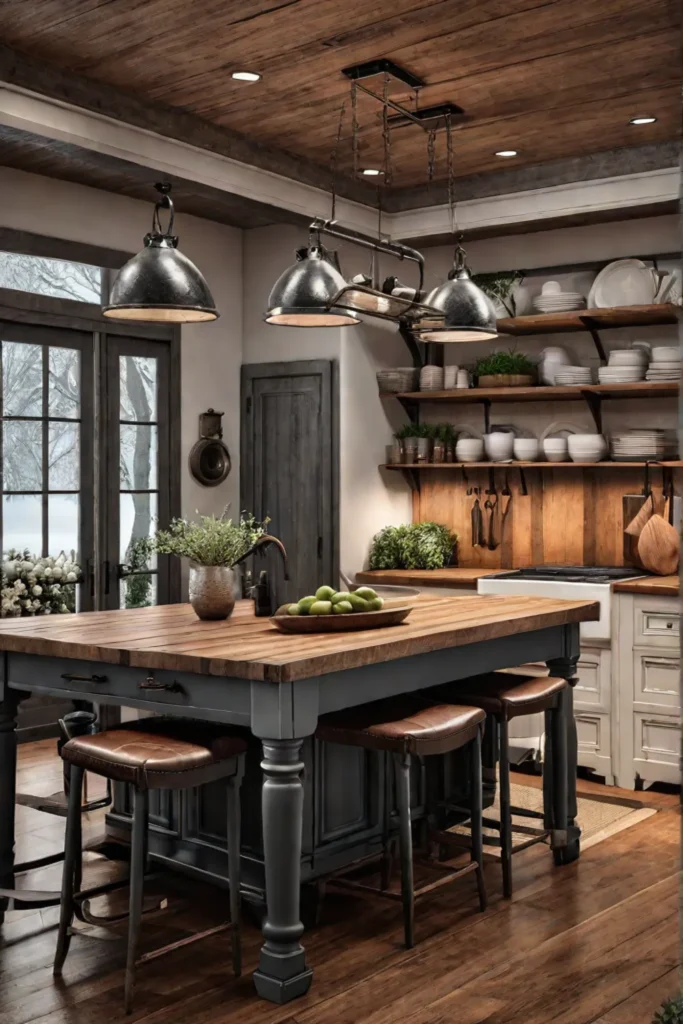
And the fun doesn’t stop there – the real magic happens when you add those all-important finishing touches. Open shelves, vintage-inspired hardware, and even repurposed furniture can transform your island into a true showstopper. Don’t be afraid to get a little scrappy and incorporate salvaged materials – that’s what farmhouse design is all about.
Building a farmhouse island from scratch might seem daunting at first, but trust me, it’s a project that any DIY-savvy homeowner can tackle. With a little planning, patience, and a whole lot of farmhouse flair, you’ll have a one-of-a-kind island that’s the envy of all your friends and neighbors.
Finishing Touches and Decorative Elements for a Farmhouse Kitchen Island
Now that you’ve got the bones of your farmhouse kitchen island, it’s time to start thinking about those all-important finishing touches. After all, the final decorative elements bring the whole farmhouse aesthetic to life.
One of my favorite ways to elevate the look of a farmhouse island is by carefully selecting the hardware and lighting. Think rustic-inspired fixtures, like oil-rubbed bronze or matte black hardware, that seamlessly blend with the natural materials. Regarding lighting, pendant lights with a vintage or industrial vibe can instantly add warmth and character to the space.
But the decorative elements don’t stop there. Incorporating personal touches, like custom-made signs or repurposed vintage accessories, can imbue your island with genuine charm and personality. Maybe you’ve got an old piece of furniture that you’ve been dying to breathe new life into – why not transform it into a one-of-a-kind storage solution for your island?
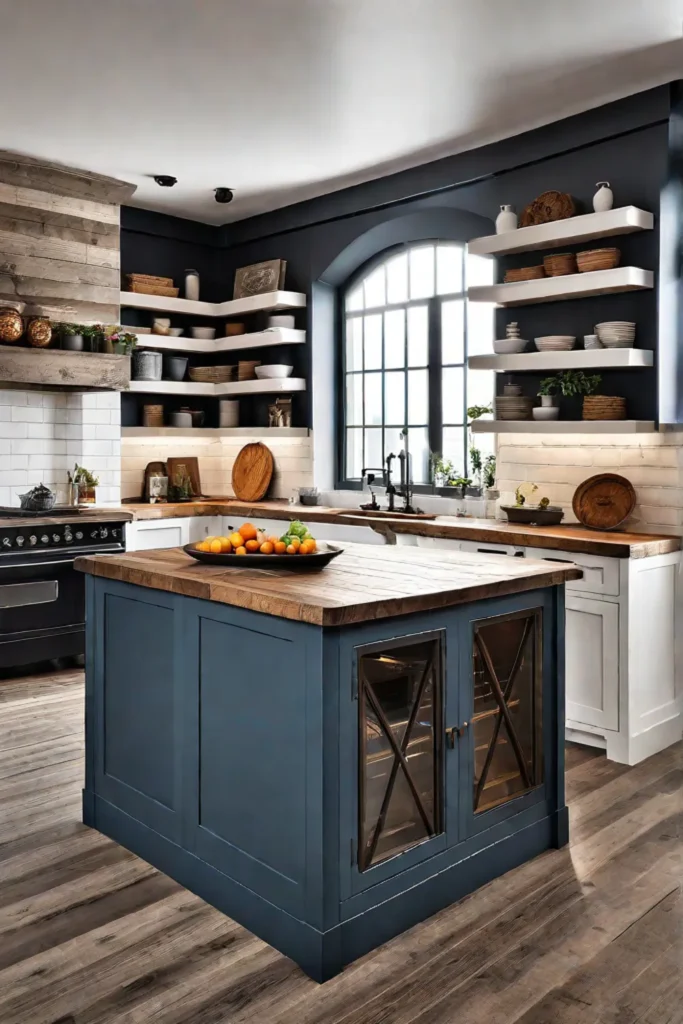
And don’t forget about the practical side of things, either. Open shelving is a farmhouse classic, providing easy access to your most-used kitchen items while also showcasing your favorite dishware or cookbooks. You can even tuck away a pull-out trash bin or recycling center to keep your prep area tidy and clutter-free.
The key is to strike a balance between form and function. Those decorative elements are important for nailing that farmhouse vibe, but you also want to ensure your island is a truly useful and practical part of your kitchen. It’s all about finding that perfect blend of beauty and brawn.
Conclusion
Creating an authentic farmhouse kitchen island is a truly rewarding project, whether you tackle it yourself or work with a professional. By carefully selecting the right materials, designing a layout that works for your space, and adding those all-important finishing touches, you can transform your kitchen into a warm, inviting hub that captures the essence of the farmhouse aesthetic.
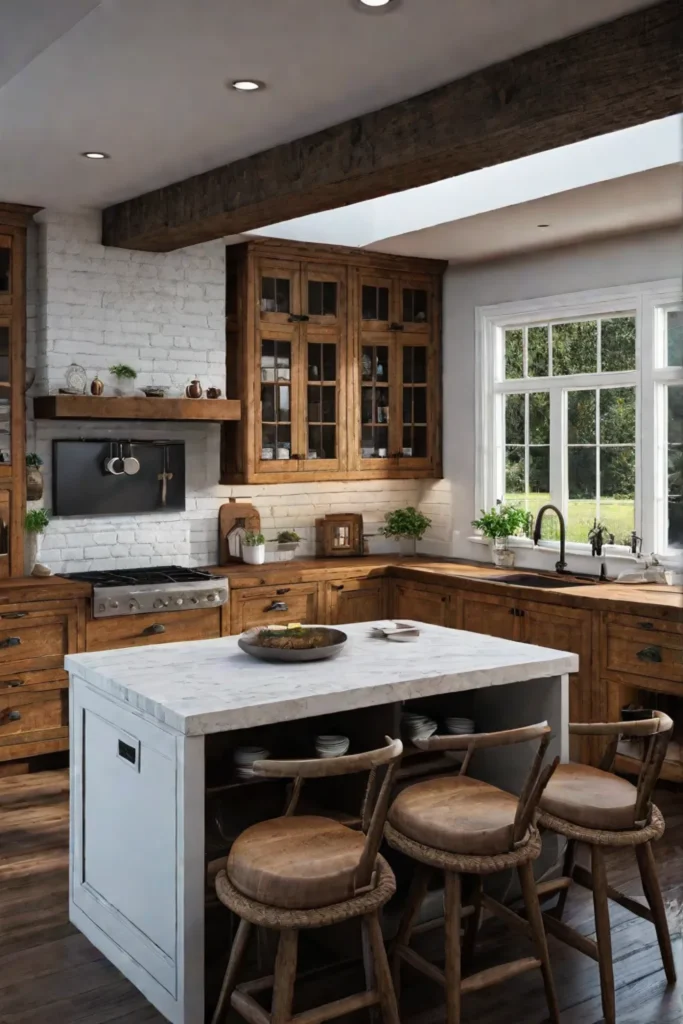
So, what are you waiting for? Grab your toolbox, put on your DIY hat, and get ready to create a kitchen island that’s beautiful and perfectly suited to your lifestyle. With a little bit of elbow grease and a whole lot of farmhouse flair, you’ll have a one-of-a-kind island that’s the envy of all your friends and neighbors.
Ready to get started? I can’t wait to see what you come up with! Remember, the key is to embrace the imperfections, celebrate the unique character of your materials, and, most importantly, have fun with the process. After all, that’s what farmhouse design is all about.
